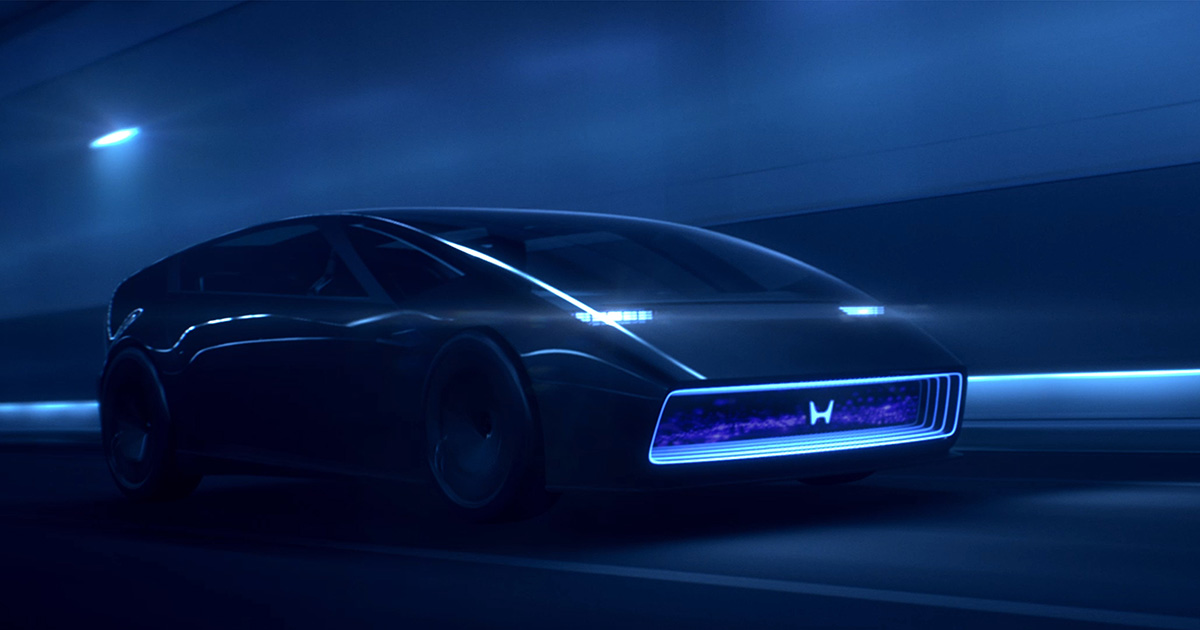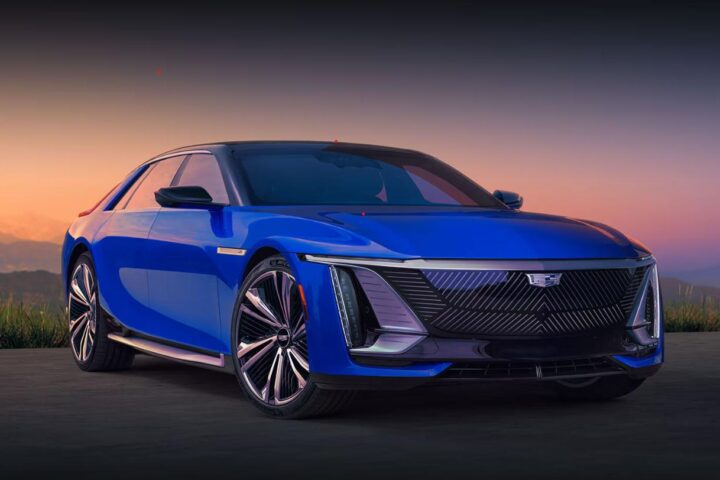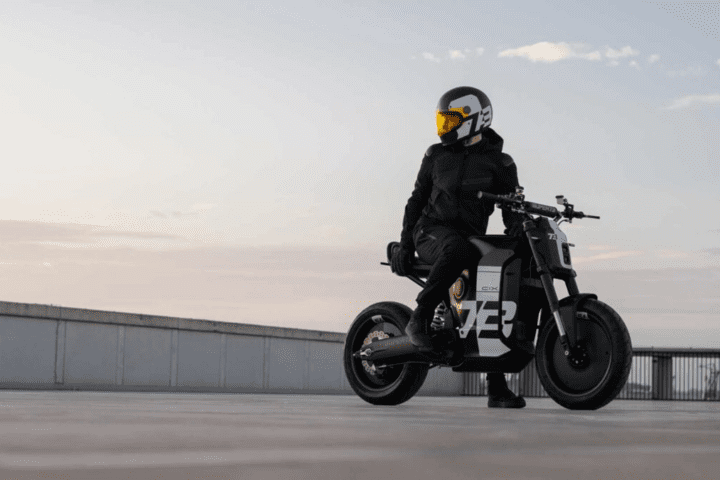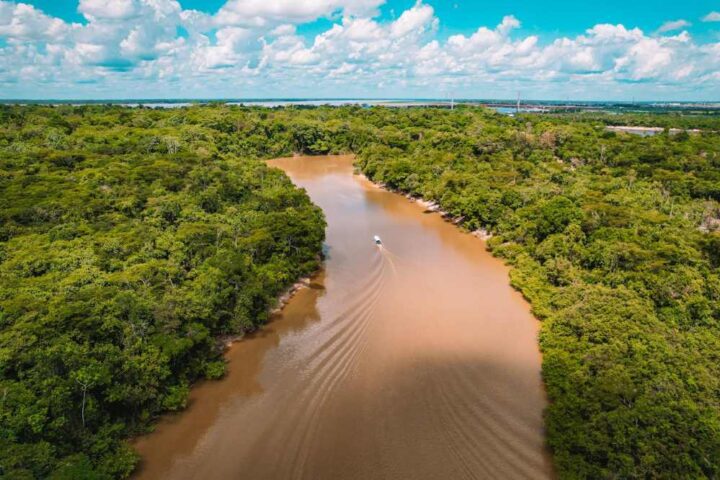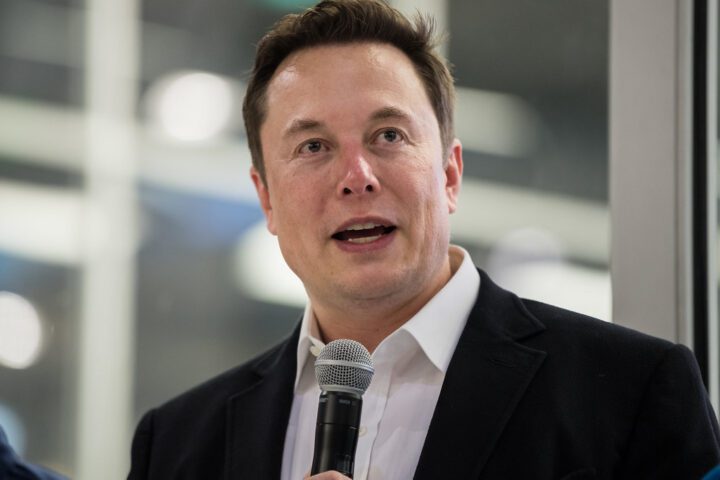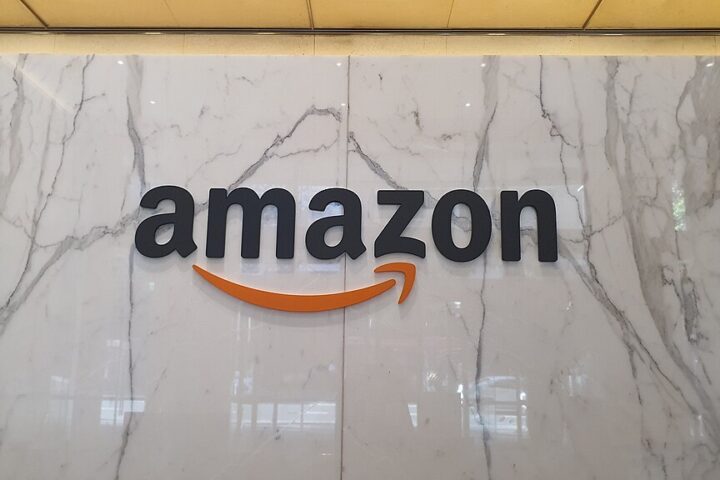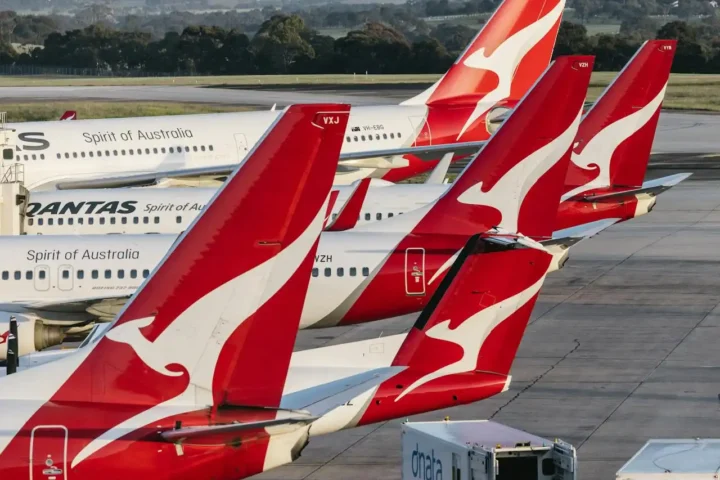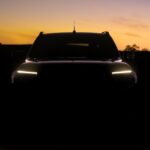Amid concerns about a slowdown in electric vehicles (EVs), Honda announced on the 16th that it will further strengthen its efforts towards EVs. Honda expressed confidence in the shift to EVs, highlighting plans to advance battery production and reduce manufacturing costs, with a cumulative investment of $63,98 billion in electrification and software development by the fiscal year 2030.
According to Honda’s announcement, the flagship EV series “Honda 0” will introduce seven models worldwide by 2030, ranging from small to mid-to-large models. Additionally, Honda plans to launch ultra-compact mobility with a mobile battery pack in Japan by the fiscal year 2025.
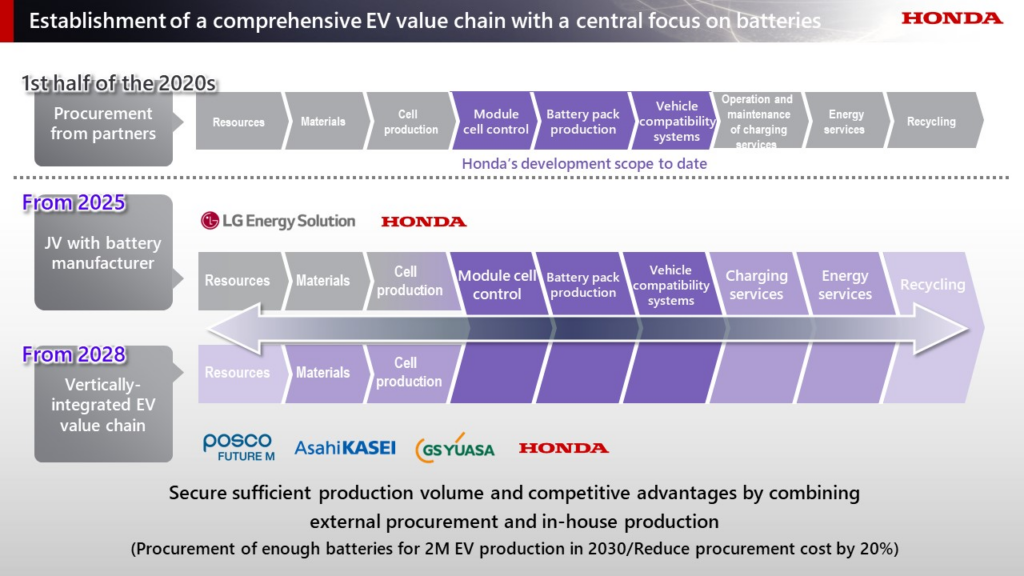
To reduce production costs, Honda aims to strengthen its battery development and supply system, with a goal to reduce procurement costs in North America by more than 20% from the current level. Furthermore, by utilizing digital technology and other means, Honda aims to reduce production costs by approximately 35% at its EV-only plant in Canada, which is scheduled to start operations in 2028.
Honda will also enhance battery production, a key component of EVs, across various regions worldwide. By the mid-2020s, battery production will commence in collaboration with local partners in China and Europe. The goal is to reduce the cost of automotive batteries by 20% by the late 2020s.
Although the rapid growth of EVs has slowed due to factors such as reduced government subsidies and saturation of demand, Honda remains confident that the shift to EVs will proceed steadily in the long term. Honda aims to build a strong brand and business foundation in EVs, looking ahead to the period of widespread adoption in the late 2020s and beyond.
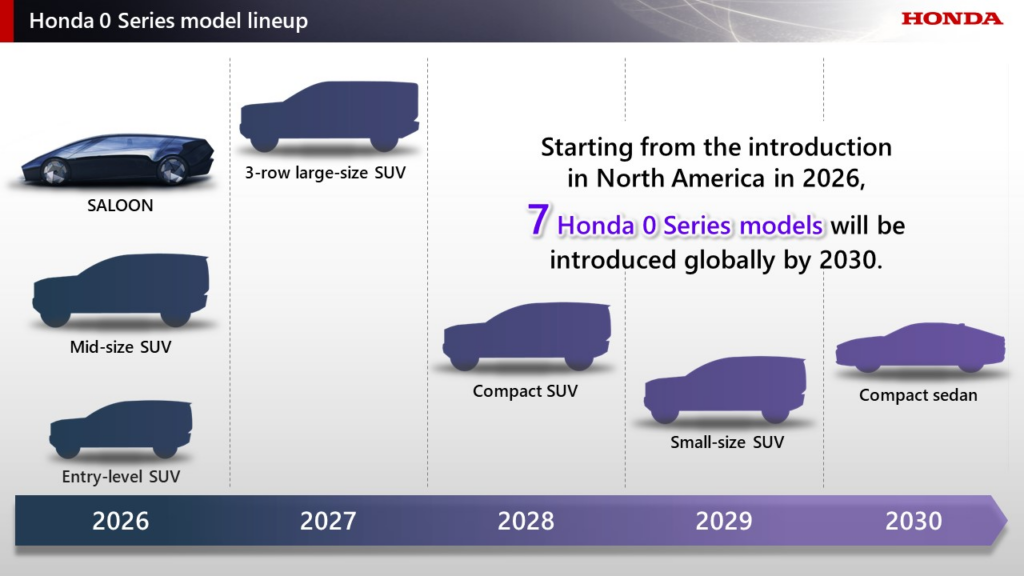
During a press conference held in Tokyo, President Toshihiro Mibe emphasized that the company’s goal of ensuring all new vehicles sold by 2040 are EVs and fuel cell vehicles will proceed as planned without revision. By 2030, the aim is to achieve a 40% sales ratio (2 million EVs), with the breakdown being 750,000 units in North America, 750,000 units in China, and the remaining 500,000 units distributed across Japan, Asia, and Europe.
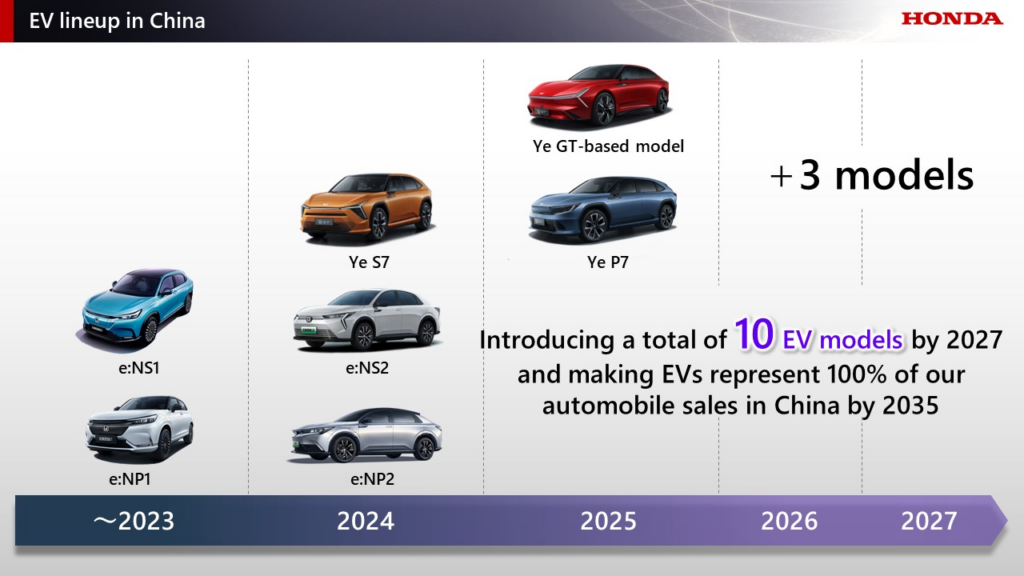
In Japan, Honda plans to launch the light commercial EV “N-VAN e:” based on the “N-VAN” light commercial vehicle in fall 2024. By 2025, they will introduce light passenger models, and in 2026, they plan to sequentially launch small EVs that emphasize “driving fun.” The new vehicles are expected to utilize Honda‘s unique swappable battery “Honda Mobile Power Pack” (MPP).
Similar Posts
In China, Honda will conduct an independent product rollout, planning to introduce 10 EV models by 2027 and aiming for a 100% EV sales ratio by 2035. In addition to the already existing “e:N Series,” the lineup will be expanded with the new “ye Series.”
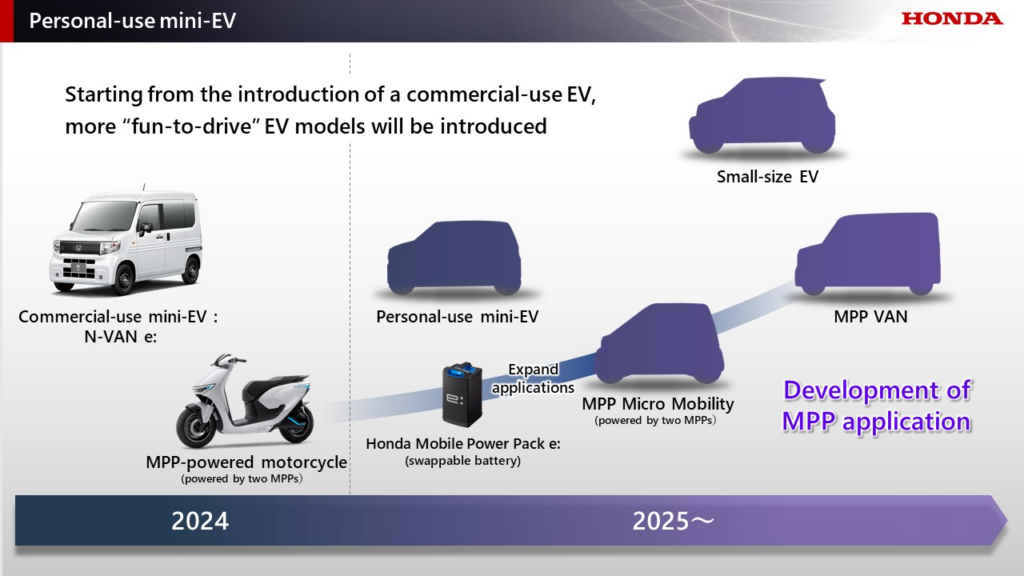
To produce “Software-Defined Vehicles” (SDV) based on EVs, it is essential to internalize the production of batteries, which account for 30-40% of EV costs. This resulted in an increase in the investment amount. Despite the substantial investment, Honda is confident that they can recoup the costs through the subsequent EV business.
Confidence in “cash generation ability” (earning power) is behind the increased investment amount. President Mibe noted that hybrid vehicles (HV), which currently support Honda’s business, are performing well, particularly in North America. Continuous cost reduction and performance improvement efforts have made Honda’s HVs “profitable vehicles.” Moving forward, Honda plans to refresh the powertrain and platform, creating a highly efficient, low-cost, and compact HEV system.
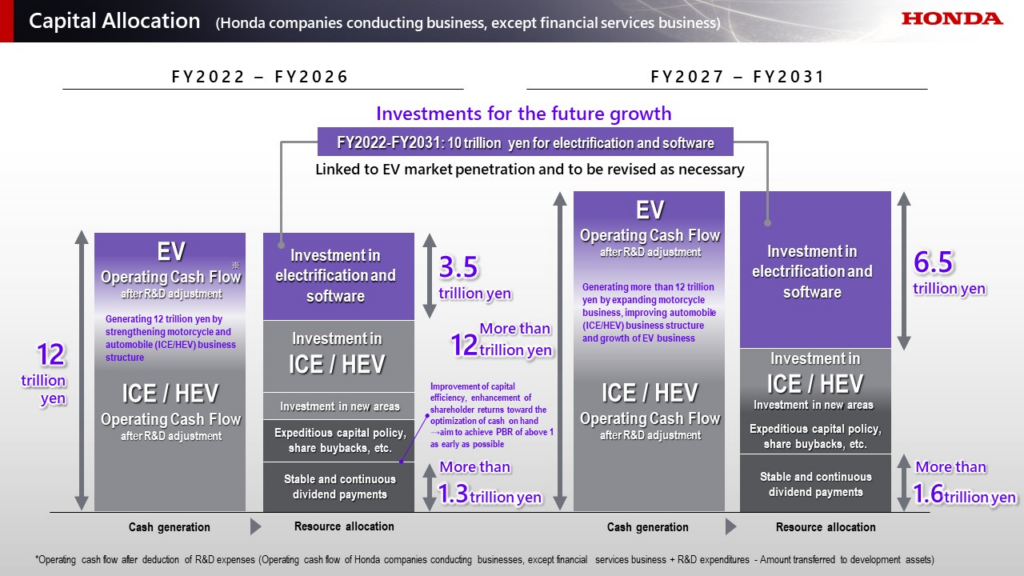
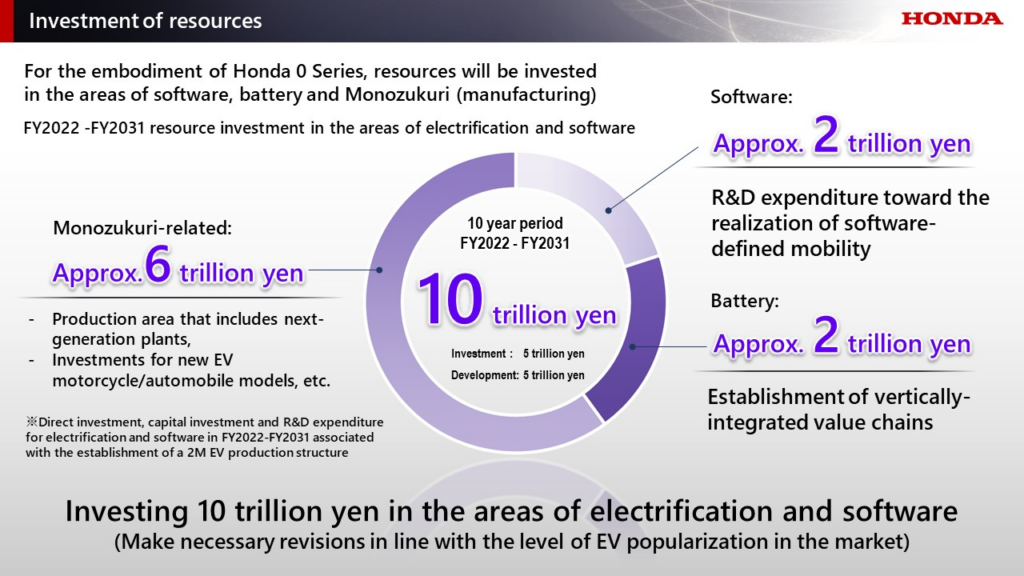
Sales of HVs are expected to continue increasing, potentially reaching a level of 1.8 million units annually. Honda is currently planning for increased HV production. The aim is to increase sales and profitability of the successful HV business and invest the earned money into EVs, creating a virtuous cycle.
